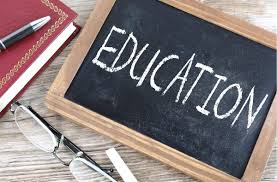The internet has been a part of our life for a while now. The digital advancements following the late 1980s and early 2000s made internet-powered applications accessible to ordinary people. Since then, computers, laptops, and smart appliances like smartphones, smart tv, and even intelligent fridge have taken over our daily lives. There are billions of people using smartphones across the world. Smartphones are a good way of connecting with people and a convenient way of gathering information about anything and everything.
Think about it like this, what if you are trying to find some information about Escape room breakout for a project? You would go onto a search engine like Google and gather information on it. Thus, collecting and sharing knowledge for all purposes (especially education) has become accessible today. This has led to an increase in the use of social media as well.
Our relationship with social media is complicated. Social media offers an exciting way of communicating with others, but it also takes over various aspects of our lives. It was only during the pandemic that we recognized the unwavering power of social media. The continuous stretch of lockdowns and quarantines led us to find solace in social media. Social media became a source of entertainment, a mode of communication, and most importantly, a valuable tool for the education system.
Social media is in the process of reshaping and reinventing the education system. So, what exactly is the Role of social media in the education system in and after 2022?
Table of Contents
• Use of social media pages to provide updates and additional information
Facebook and Twitter can act as a source of information and updates. Students can check for any educational updates and event alerts through social media. Teachers and students can find an exciting dashboard approach instead of a more traditional updating system. The users can stay connected, and the teachers can share important updates encouraging a free flow of discussion.
• Online and live streamed lectures
Teachers are the educational institutions that can use official social media groups (such as Facebook groups and Instagram group chats) to stream lectures and share online pre-recorded lectures. The groups would be officially closed groups that provide addresses, study materials, and relevant information. This encourages everyone to stay in the loop during school break. During the pandemic, these groups strengthened the bond between teachers and students and helped students swiftly transition to online classes.
• Social media as a bulletin board
Social media applications like Twitter have the potential to serve as bulletin boards. Teachers or instructors can create an official Twitter handle to provide alerts, reminders, and ad updates. The twitter spaces can also encourage discussions regarding several topics. The school can make a particular class handle and use it every year. The 280-character limit requirement of Twitter will also encourage students to write concisely and transparently.
• Class blogs to encourage discussions
Students are always encouraged and often required to create blogs during their school years. Writing blogs help students work on their creative skills and provides them with a space for digital content creation. Students can make a blog regarding any interesting course material or anything that needs to be explored in detail. This way, students will learn different aspects of a particular concept which is not always possible in a traditional classroom. Several digital platforms are available online for free, like Blogspot, Medium, and SquareSpace, which are perfect for beginners.
• Introduction of video essays in education
Video essays have become a significant visual aid for different subjects. Social media apps like Instagram can provide access to pictures. This has the potential to create a space for the introduction of video essays in education. Specific subjects and disciplines require visual and graphical engagement. Teachers can use pictures as a visual aid and also assign projects related to Instagram features.
• Assign essays and project groups through communication apps
Social media applications are not just limited to entertainment applications like Facebook and Instagram. It also encompasses other communication applications like Google and WhatsApp. The increasing reliance on Google Classroom has proved that an online platform is convenient for assigning class projects and updates. Online grading is also extremely popular because of its accuracy. Breakout rooms have also provided a space for smaller interactive social circles in education.
• Share information about the educational institution
Networking is an essential aspect of any organisation, and the educational sector is no different. In today’s world, it is necessary to have at least an official institution social media handle. It is even better when the institution is connected to the people through various social networking sites. It is recommended that all institutions have a directory of social media that can be used to connect to the educational institution. This creates a transparent channel through which teachers, students, and any other associated person can communicate with each other.
Conclusion
The pandemic has forced us to reinvent the world as we know it. There already exists a space for social media in the education system, and it will only advance more in the coming years. There are different ways of including social media in the education system, which will further revolutionise education.















